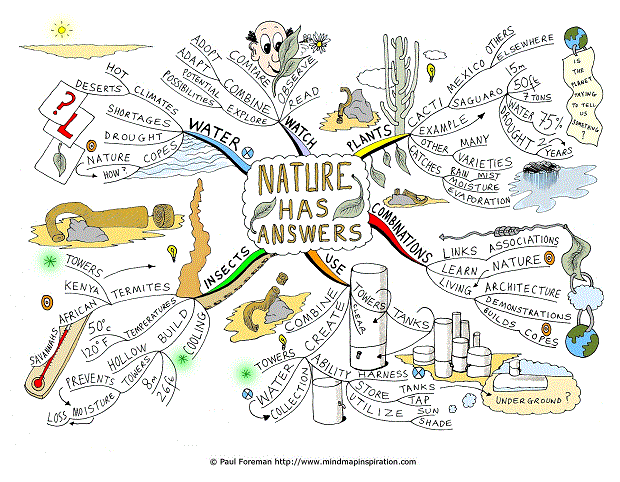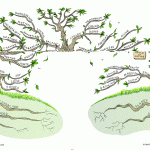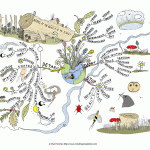Termites (ant-like insects) build towers in hot climates to keep their nest cool and capture moisture.
Termites have soft skins and dry out easily, most live beneath the ground. In African savannahs, where temperatures can reach 50°C (120°F) some termites build hollow towers up to 8m (26ft) high to prevent their underground nest overheating during the day or losing too much heat at night; the towers also prevent loss of moisture. (Source of reference: Did you know? ISBN 0276 420144)
Cacti do a similar thing to collect water. The Saguaro Cactus of Mexico; giant cacti that grow up to 15m (50ft) tall, can store many gallons of water often weighing 6 or 7 tons, 75% water – enough for it to last through two years of drought! There are many other similar varieties that catch, collect and store water. (Source of reference: Nature’s Masterpieces ISBN 0276 421655)
Might these natural living architects inspire us to build structures capable of doing a similar thing? Catch water in a seemingly dry area, perhaps via giant towers with tanks below, collecting moisture from the environment. (See also: If I had a desert Mind Map)
I feel nature has many more answers awaiting our discovery, if we observe and connect, explore and experiment with possibilities. By learning how other species cope on the planet we might be able to apply it to aid comparative human problems.
Is the planet trying to tell us something?
A great example of making connections is Catseyes. In 1934 Percy Shaw (1890-1976) was driving home in Yorkshire, he saw his headlights reflect in the eyes of a cat beside the road and it inspired him to invent a device that could help motorists in lower light driving. A life-changing idea. (Source of reference: 1001 inventions that changed the world ISBN 9781844036110)
Nature has answers. So the question is:
What might you discover?
More from Mind Map Inspiration:
Submit your review | |








